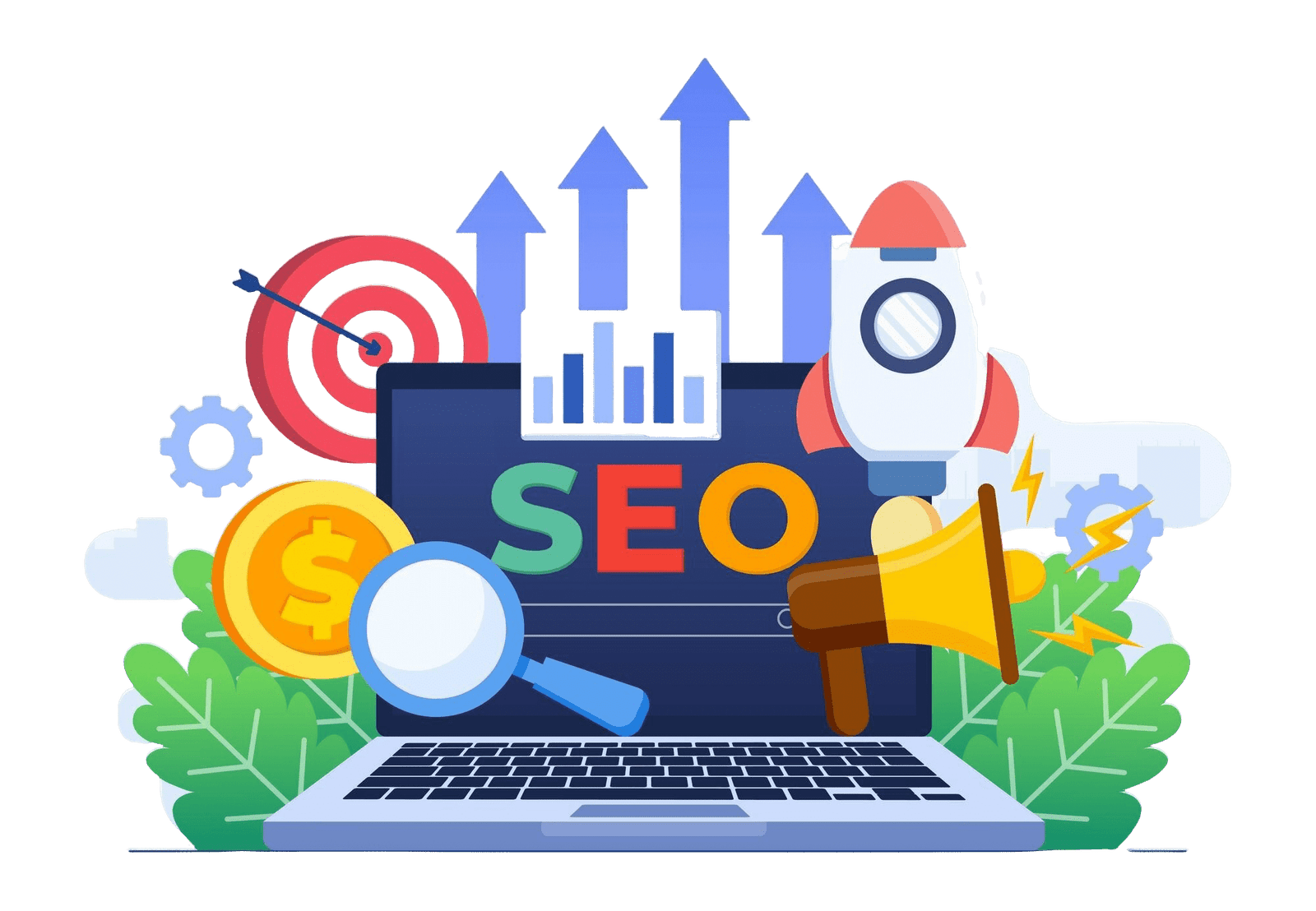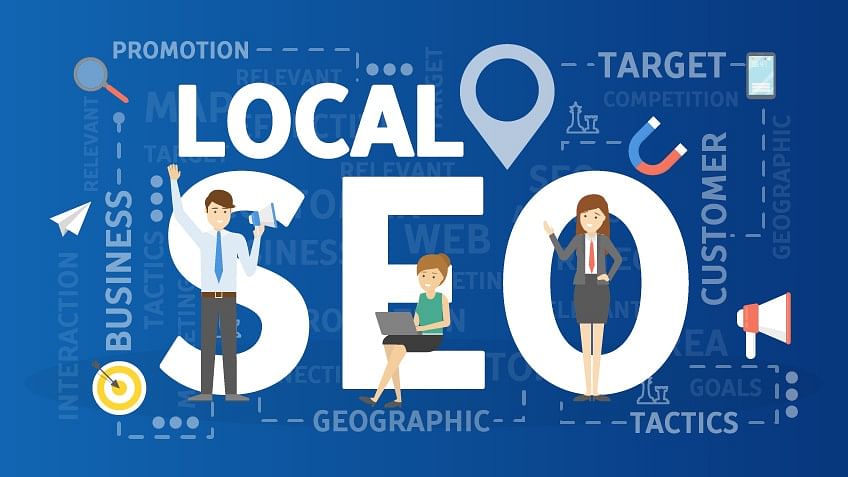Best SEO Company In Lucknow

We focus on helping businesses grow with effective Search Engine Optimization (SEO). As the Best SEO Company In Lucknow, we ensure your website ranks higher on Google, making it easier for your target audience to find you. Let us help you stand out and unlock your business’s full potential with our expert SEO services.


What is SEO?
Search Engine Optimization (SEO) is about improving your website’s visibility on search engines like Google and Bing for the right keywords. Search engines aim to deliver the most relevant and trustworthy answers to users, and that’s where SEO comes in.
The two main goals of SEO are :-
- Building authority – When two websites have similar content, the one with more authority ranks higher and gets more clicks.
- Ranking for relevant keywords – Your website should show up at the top when customers search for your business, products, or services.
Our proven SEO strategies are designed to meet technical ranking factors while engaging your audience. We don’t just optimize for search engines; we create content that captures attention, answers questions, and showcases your business. Whether you need SEO experts or advanced search engine marketing strategies, we’ve got you covered with solutions that deliver results
Are You Facing Some Of These Challenges?
In today’s competitive digital landscape, a strong SEO strategy is essential. Without it, staying ahead can be difficult. Here are a few signs you may need help from a trusted online marketing agency like ours:
Lack of Online Visibility
If your customers can’t find you online, they’ll choose your competitors who are more visible. Don’t lose out on valuable business opportunities! With the best SEO services from a top SEO company in Lucknow, we can help your business stand out and attract the right audience online.
Low Website Traffic
A well-designed website is only valuable if it attracts visitors. Without proper SEO marketing from the best SEO company or experts, low traffic can lead to fewer leads, conversions, and less revenue, ultimately slowing your business growth. Let the top SEO company in Lucknow help you drive the results you need.
Tough Competition
If your competitors outperform you in search engine rankings, they capture a significant share of the market that could have been yours. You can level up the playing field with our SEO experts which ensure your business stays ahead with effective SEO marketing strategies.
Audience Miss-out
Without proper targeting, your website may attract visitors who are not interested in your products or services. With the help of our SEO experts, you can focus on driving the right audience to your site. This ensures higher conversions and helps you avoid losing potential revenue.
Poor User Experience (UX)
At the best SEO company in Lucknow, we ensure your website is optimized for speed, user-friendly navigation, and responsiveness, helping you stand out with the best SEO services.
Ineffective Content Marketing
Without a well-thought-out content strategy, your content may fail to engage your audience or achieve its full potential , we combine SEO marketing and expert strategies to ensure your content attracts leads and strengthens your online authority.
We Provide Best SEO Services
Our goal is simple—to drive more traffic to your website and turn visitors into customers. As a trusted Top SEO company in Lucknow, we offer customized search engine marketing solutions for businesses of all sizes. From small businesses to large enterprises, our strategies are designed to deliver measurable results.

Our SEO services cover detailed SEO audits that assess a website’s current performance and all critical aspects of a site and lay the foundation for a customized, data-driven SEO strategy.
 We identify the most relevant and profitable search terms for your business to attract quality traffic and improve your rankings for high-intent search queries.
We identify the most relevant and profitable search terms for your business to attract quality traffic and improve your rankings for high-intent search queries.![On-Page SEO: The Practical Guide For SEO Beginners [2024]](https://mangools.com/blog/wp-content/uploads/2020/10/on-page-seo-guide-illustration.png)
By optimizing your website content, meta tags, ad descriptions, URL structures, and overall website design, we’ll make your website more search engine-friendly to improve rankings and user experience.

To ensure that search engines can access, crawl, and rank your website effectively, we’ll check and optimize your website speed, mobile responsiveness, schema markups, XML sitemaps, and robots.txt files.

Our team of skilled writers produces well-researched, engaging, and keyword-optimized content that addresses your target audience’s needs and pain points to push your website rankings to the top while building trust with your prospects.

Our SEO consultancy embraces professional link-building services using ethical, white-hat link-building techniques designed to avoid penalties from search engines while improving your ranking and authority.

For businesses with a physical presence or those providing services to a specific geographic area, we offer Google Business profile optimization along with local citation creation and local-specific keyword targeting to attract nearby customers.
FAQs
Some Frequently Asked Questions

We stand out as the best SEO company in Lucknow because of our results-driven strategies, experienced SEO experts, and a proven track record of helping businesses rank higher on search engines.
Hiring SEO experts ensures that your website is optimized for search engines, improving your online visibility and driving targeted traffic. Our team focuses on delivering the best SEO services tailored to your business needs.
Our best SEO service package includes keyword research, on-page and off-page optimization, content creation, technical SEO, and search engine marketing to boost your online presence effectively.
Search engine marketing (SEM) includes paid advertising to boost visibility, while SEO focuses on organic strategies to rank higher on search engines. We offer both services to provide a comprehensive digital marketing solution.
SEO is a gradual process. While some improvements may be visible within a few weeks, achieving significant results but it usually takes 3-6 months. As the best SEO company, we ensure consistent progress and long-term success.

Take the First Step to Better Rankings with Our Free SEO Service Audit
Let’s take your online presence to new heights with SEO strategies that deliver outstanding results for your business. Don’t miss the opportunity to boost your marketing efforts with the Best SEO services in Lucknow.
Contact us today for a free consultation and discover how we can drive real, measurable growth for your brand through expert SEO solutions.



